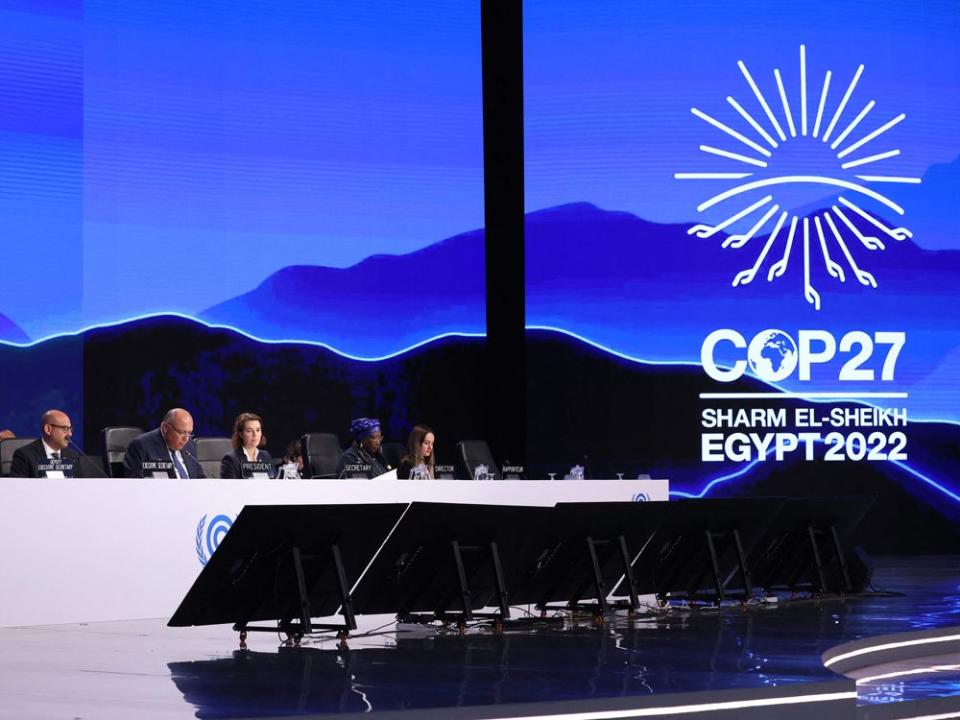Opinion: Maybe Canada should be getting climate reparations

By Steve Ambler
The recent COP27 climate meeting in Sharm el-Sheikh floated the idea of reparations for climate change: developed countries would pay poorer countries for their losses from it. The economic argument for reparations is simple. CO2 emissions are causing warming. This involves an indirect cost that has no market price, an “externality” in economists’ terms. This externality should be compensated.
There is just one small problem, however. A realistic assessment of the effects of climate change leads to the conclusion that poorer countries could very well owe compensation to the developed economies that are responsible for the bulk of CO2 emissions.
Let’s assume for the moment that CO2 emissions are responsible for 100 per cent of global warming and that this warming has only costs and no benefits. How severe are these costs?
Measuring average global temperatures is not simple. Surface weather stations are not evenly distributed across the globe, so it’s necessary to interpolate what’s happening between them. Moreover, they are subject to what’s called “urban heat island” effects — a station that used to be in a quiet country field but is now next to an asphalt airport runway will show artificial temperature increases. For this and other reasons, it’s better to use satellite data for the lower troposphere, even though such data has only been available since the 1970s. What the satellites show is that global average temperatures are now barely higher than in 1998 and their increase seems to have stalled.
But there’s a catch. As former environment minister Catherine McKenna used to repeatedly remind Canadians, the colder parts of the globe are warming faster than the rest. (Antarctica, which has been “enjoying” record cold, is an exception.) Global temperature is now 0.32 degrees Celsius above its average for 1991-2020, but in the Northern Hemisphere where most of the heavy emitters are, it is 0.43 degrees higher while in the Arctic it is fully 0.93 degrees higher. In the tropics, however, the increase is just 0.04 degrees, which is well within the realm of measurement error — which means the already warmer (and less developed) parts of the globe have hardly been impacted at all.
Moreover, there is no significant trend either globally or in any regions in droughts, floods, heat waves, or hurricanes and other cyclones. The hue and cry over the recent floods in Pakistan is based on a single data point, albeit one that had devastating human consequences. But it ignores the historical data, which indicate that Pakistan is no stranger to equally serious and even more deadly floods in the past.
Sea levels are rising, to be sure, but they have been rising since the beginning of the Holocene interglacial period more than 10,000 years ago, and they rose at a fairly constant rate throughout the 20th century, starting long before the developed economies were emitting large quantities of CO2. Although we have been warned repeatedly and often eloquently that small tropical atoll islands are at risk of being submerged, most such places are actually stable or increasing in area from the accretion of sediments brought in by tides.
There’s also the fact that CO2 emissions bring benefits as well as costs. CO2 is plant food: plants need it to survive. Atmospheric concentrations are up from pre-industrial levels but are well below — at least four or five times below — what they have been for most of the 600 million years that complex life has existed on Earth. Satellite data show that vegetation cover is up all around the world, much of it due to CO2. More CO2 means faster plant growth. It also makes plants more drought-resistant.
One estimate of the monetary value of the increase in agricultural productivity just from CO2 between 1961 and 2011, based on 45 agricultural crops, is more than US$3 trillion in constant (2006) U.S. dollars. Agriculture is also more productive due to the availability of nitrogen-based fertilizers made with fossil fuels. Both farmers and consumers throughout the world benefit from the increase in productivity. This is a positive rather than a negative externality.
The data also clearly show that deaths from extreme cold outnumber deaths from extreme heat by a factor of at least ten worldwide. Surprisingly, this is true even for mostly tropical countries, such as Brazil and India. As a result, a small increase in average temperature means fewer deaths from extreme weather even in the tropics. Another positive externality.
In sum, if reparations are a payment to compensate for externalities due to CO2 emissions, a realistic assessment of those externalities means high-emission countries would owe little or nothing and might even themselves be owed something because of the clear benefits of the CO2 they have been generating.
This should be welcome news for COP27 delegates who pushed for the reparations agreement. It probably won’t be, however, since the COP meetings are not about realistic assessment but rather the expiation of perceived guilt through massive wealth transfers.
Steve Ambler is a professor of economics in the École des sciences de la gestion, Université du Québec à Montréal.
